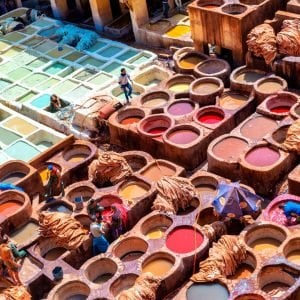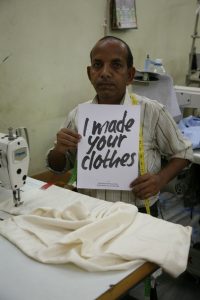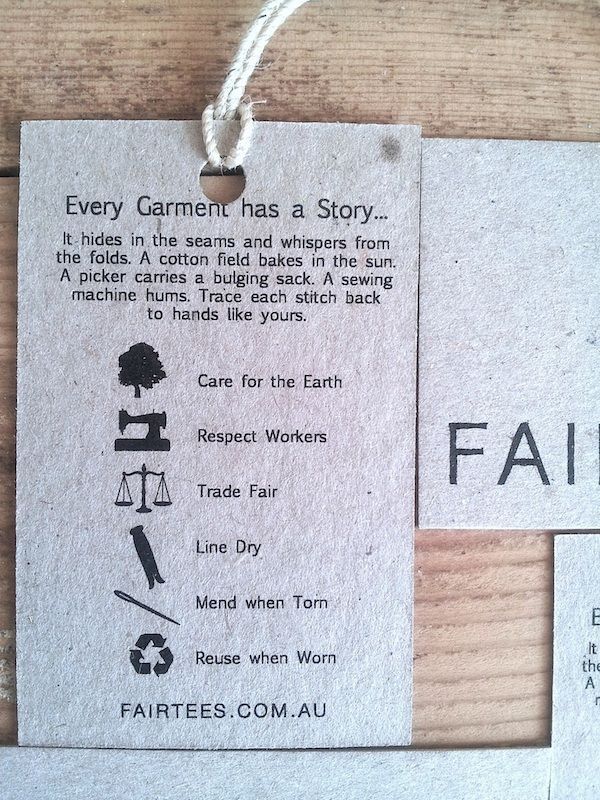
Decoding Responsible Fashion for Better Consumption
This publication is also available in: Français
English (UK)
Deutsch
Italiano
Español
It is one of the most powerful industries in the world economically, but also one of the most devastating in ecological, environmental, human, and health terms. The fashion industry is starting to raise alarms, pushing people to question and educate themselves in order to take the path of responsible fashion.
Fast Fashion: The Empire of Newness and Instantaneity at a Low Cost
We live in a society that is constantly racing for the latest novelty or innovation. This race touches all areas, especially one: fashion. The saying goes that fashion is just a perpetual restart, however, even though this is true, and it would be good to reuse our pieces, we notice a consumption that keeps increasing.
This constant renewal and the trend changes as rapid as a blink of an eye is the creed of Fast Fashion. A devastating mode of consumption offering pieces that are on-trend and defying all prices! Charming on paper, its reality is starting to alarm us all. Indeed, although economically extremely virtuous, this industry wreaks ecological and human havoc.
Its Idea: Surfing on Trends
With the influence of social networks nowadays, fashion quickly finds itself at the forefront. Many influencers, such as Camille Callen, with 1 million followers on her Instagram account @noholita, aim to present different looks and new pieces almost daily. These accounts, followed by millions of subscribers, thus encourage overconsumption of fashion, where we feel the necessity to constantly buy the latest pieces released, in order to be perceived as “fashionable”.
Behaviors encouraged by the thousands of pieces that come out each month in Fast Fashion stores. This conception of fashion was set up by Zara’s creator, Amancio Ortega Gaona, in the 1970s.

Outpacing Creators
Ortega Gaona’s idea was to accurately target trends by producing as quickly as possible and offering more affordable prices. In summary: make “luxury” accessible to all.
As a result, many designers have seen their models copied and sold at much more attractive prices by Fast Fashion brands. Many designers have turned to the justice system to defend their creations, in vain…
This model is particularly appealing due to its costs. T-shirts for €3, pants for €10, and sales galore, even offering products at €0… An outrage that alarms many, yet still attracts countless buyers.
Running Faster than Time
Stipulated in its name, this fashion plays on speed. Because yes, in the world of Fast Fashion, you must be quick, because the top you order today will already be out of style in 2 weeks.
Even in-store, this spirit of change is present. At retailers like Zara, pieces change sections every week to give consumers the impression of a constant renewal. And above all, the idea that you must buy immediately, at the risk of seeing the piece slip away if you come back the next day… An art of manipulating consumers.
The Reality of Fast Fashion
Of course, to constantly offer newness, compromises must be made. And for that, Fast Fashion has put aside its morals, ethics, and ecological commitment.



Unlike a designer who takes several months to create a €25 t-shirt from A to Z, brands like Shein or Boohoo from the same group, do it in 2 weeks, with a selling price of €5. And this can be explained by:
- the copying of existing models
- the use of poor quality fabrics (sometimes full of microplastics and dangerous to wear) and washed out in the simplest way with toxic and highly polluting solvents
- manufacturing in factories where labor is subcontracted, under deplorable and sometimes unsafe conditions, with human and labor rights not respected, employees being more than underpaid, and assembly done on a production line
A mode of consumption that aims for the extreme, with a focus on ever-greater returns, to the point that we now speak of ultra Fast Fashion.
Consumers on the Path to Responsible Fashion
The collapse of Rana Plaza, the exploitation of Uyghurs and other workers revealed, reports on water and air pollution near factories, diseases developed related to the textile industry, documentaries through which voices are raised… Gradually, reality slips through the rhinestones and sequins, and consciousness awakens.
Indeed, in the face of alarming findings, and in a context where the state of the planet worries to the point of developing waves of eco-anxiety, more and more people wish to inform themselves about the textile industry and responsible fashion, in order to consume more consciously.
However, some obstacles stand in the way of consumers seeking responsible fashion.
Bypassing Greenwashing
Feeling endangered, Fast Fashion brands have tried to engage in responsible fashion initiatives… At least, to give the impression. Greenwashing involves subtly manipulating marketing and especially word choices to make it seem like the brand is created under the right conditions of responsible fashion.
For example, a brand might say that their pieces “are designed in their Parisian workshop,” while they were sewn deep in China by underpaid workers. We find at the top of the podium the “made in France” label which can even be applied to a piece manufactured in a rundown warehouse in Bangladesh, as long as a detail is added in France.
Thus, choosing responsible fashion can be a real challenge, as it requires knowing how to find the truth between the lines of speeches that manipulate consumers.

Educating Oneself in Responsible Fashion
Beyond not falling for the bait of greenwashing, responsible fashion requires some knowledge, in order to have the keys to consume better while respecting one’s values.
Is organic cotton really ecological or does its production use too much water? What does the idealized viscose really hide? What is the true cost of a garment? What carbon impact does shipping parcels represent?
We thus observe, alongside numerous reports denouncing Fast Fashion and its ravages, the creation of “educational” content to better understand the textile industry and have the keys to move towards responsible fashion.
Content to Turn Towards Responsible Fashion
In recent years, a new content format has emerged: explanatory videos.
These videos are designed to analyze a brand and determine its positioning in responsible fashion. We deconstruct the brand from all angles to discover what its actions are, how its pieces are made, how it positions itself and communicates around its DNA and integration into responsible fashion, whether the brand is honest and transparent, or if it resorts to greenwashing…
All accompanied by explanations about materials, their creation, labels, production methods…
So many points analyzed, to better understand the true image of a brand and its values. But also to know how to analyze the brands that interest us and determine if their commitment matches our values or not.



As a continuation of these explanatory videos, Céline, from the blog Iznowgood, has released her book My Happy Wardrobe. Inside, there is an assessment of the current fashion landscape and its consequences, as well as the keys to understand and embark on the path of responsible fashion. A real bible, it provides golden information, especially for those who are less informed about the topic. This applies to textiles, the crafting of pieces, and labels.
Although it may not be affordable for everyone to invest in responsible fashion (cost, sizes…), being informed allows for more conscious and reasoned consumption.
The Analysis Serving Brands
The success of these videos is illustrated by the demand from brands for these creators to assist them with their communication. How to best highlight their strengths and values, make information understandable for all, choose the right words, inspire trust, and foster customer loyalty…
In the face of awakening and informed consumers, it is crucial for brands to be honest in their communication or risk losing credibility.


Thus, we observe, in this climate of alarm bells and changes, a consciousness awakening among consumers, and gradually among brands. Who, they have understood, must engage in changes to continue to retain their clientele, which is more informed than ever on the topic of responsible fashion.



